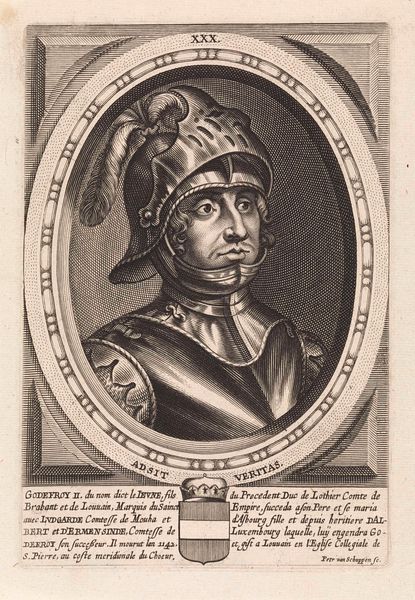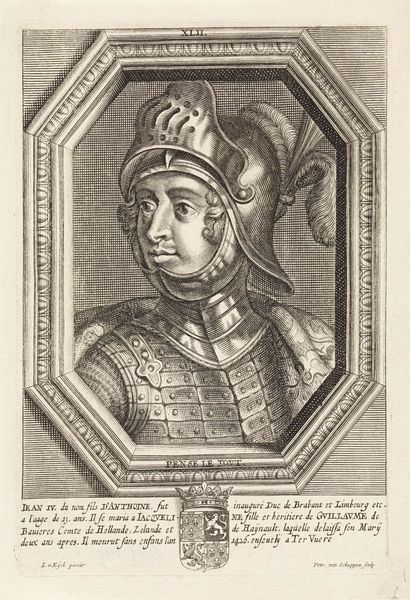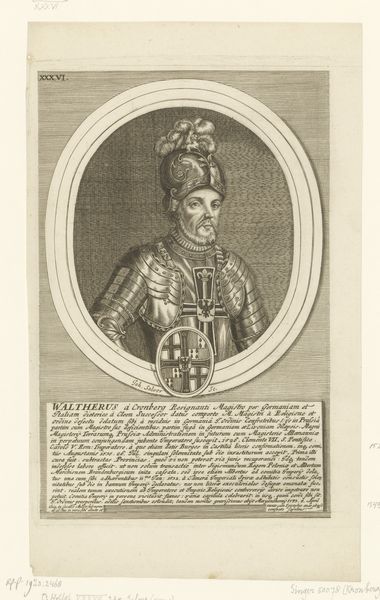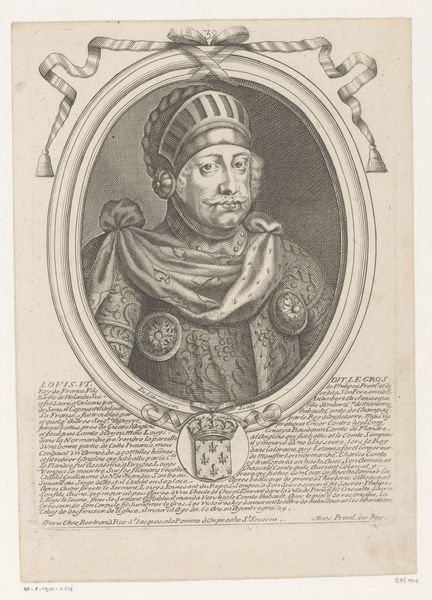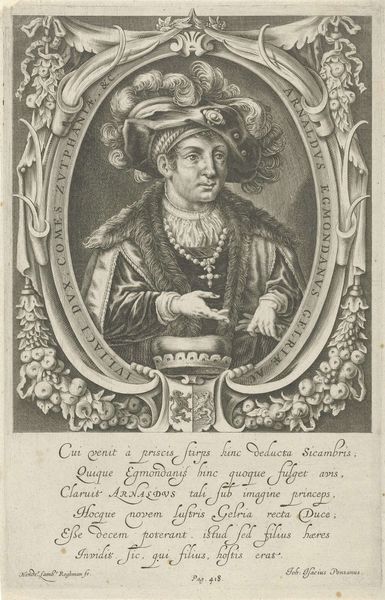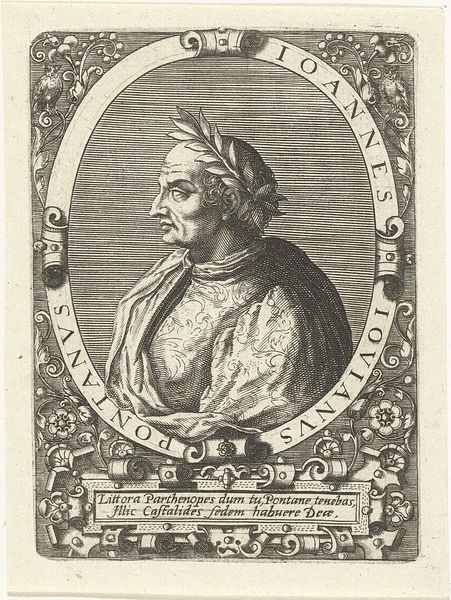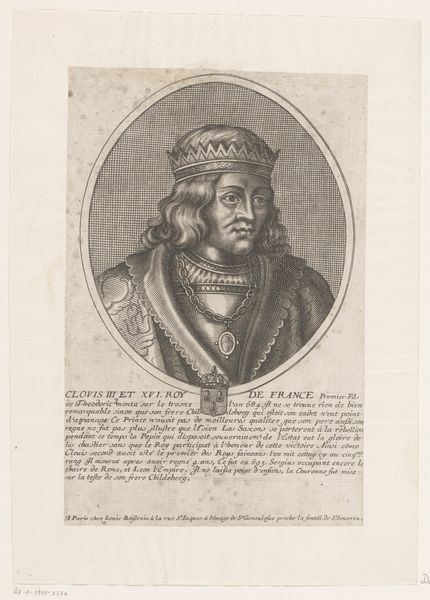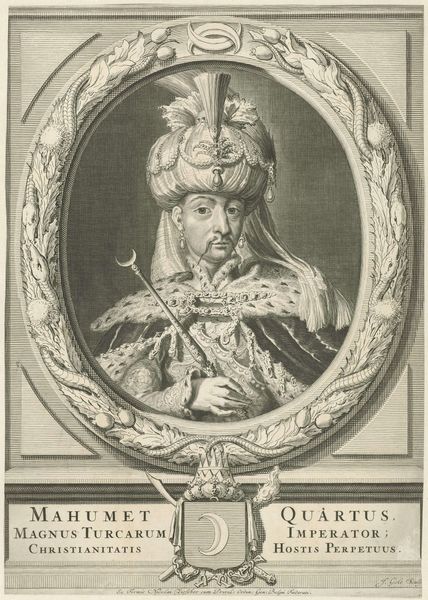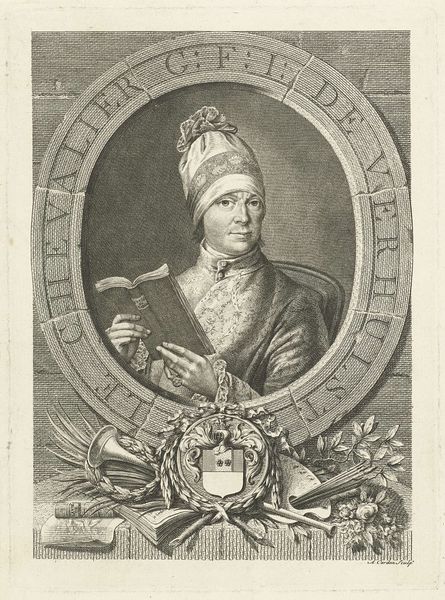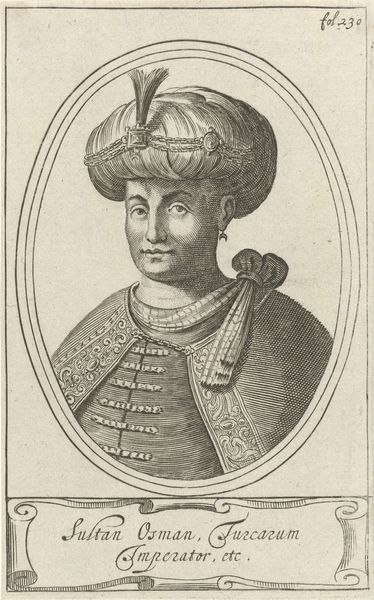
print, engraving
#
portrait
#
medieval
#
baroque
# print
#
history-painting
#
engraving
Dimensions: height 177 mm, width 120 mm
Copyright: Rijks Museum: Open Domain
Editor: Here we have Richard Collin’s engraving "Portret van Jan I van Brabant in harnas," dating from between 1650 and 1694. It feels quite formal, with that meticulously detailed armor and octagonal frame. I'm curious, how do you interpret the formal structure of this piece? Curator: Formally, consider the octagonal frame. Its geometric rigidity contrasts sharply with the soft, almost vulnerable expression on Jan’s face. The artist has carefully balanced these opposing elements. Consider too, the sharp lines defining the armor against the relatively smooth rendering of Jan's skin. Does this not suggest a careful manipulation of visual texture for expressive purposes? Editor: I hadn't thought about it like that. It does seem to highlight a contrast between the man and his armor. The frame also seems to lock him in, in a way. Curator: Precisely. Notice also the inscription below the portrait. It serves a dual function: identification, of course, but it also acts as a textual border, mirroring the frame above and further emphasizing the self-contained nature of the portrait. Consider the relationship between text and image – how does the presence of the inscription affect your perception of the visual elements? Editor: I guess it does solidify the idea of Jan as a historical figure, not just an aesthetic study. Are you saying all these elements are deliberately arranged to create a specific reading? Curator: Exactly. The artist's choice of line, shape, texture, and framing devices contributes to a highly constructed representation. Ultimately, by analyzing these intrinsic qualities, we approach a richer understanding of the work's aesthetic power. Editor: This makes me appreciate how much thought goes into every aspect of a piece, beyond just the subject matter. Curator: Indeed. Form truly shapes meaning.
Comments
No comments
Be the first to comment and join the conversation on the ultimate creative platform.
